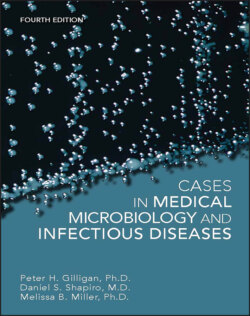Читать книгу Cases in Medical Microbiology and Infectious Diseases - Melissa B. Miller - Страница 18
Microscopic
ОглавлениеBecause most infectious agents are visible only when viewed with the aid of a light microscope, microscopic examination is central to the laboratory diagnosis of infectious diseases. Microscopic examination does not have the overall sensitivity and specificity of culture or the newer molecular diagnostic techniques. However, microscopic examination is very rapid, is usually relatively inexpensive (especially when compared with molecular techniques), is available around the clock in at least some formats in most institutions, and in many clinical settings, but by no means all, is highly accurate when done by highly skilled laboratorians. The organisms can be detected either unstained or by using a wide variety of stains, some of which are described below. Microbes have characteristic shapes that are important in their identification. Morphology can be very simple, with most clinically important bacteria generally appearing as either bacilli (Fig. 1a) or cocci (Fig. 1b). The bacilli can be very long or so short that they can be confused with cocci (coccobacilli); they can be fat or thin, have pointed ends, or be curved. The arrangement of cocci can be very helpful in determining their identity. These organisms can be arranged in clusters (staphylococci), pairs or diplococci (S. pneumoniae), or chains (various streptococcal and enterococcal species).
Fungi are typically divided into two groups based on morphology. One is a yeast (Fig. 2), which is a unicellular organism, and the other is a mold, which is a multicellular organism with complex ribbon-like structures called hyphae (Fig. 3). Organisms that are referred to as parasites may be unicellular—the protozoans (Fig. 4)—or highly complex—the nematodes and cestodes (Fig. 5). Parasites are typically identified on the basis of morphology alone.
Because of their small size, viruses cannot be visualized by light microscopy. Alternative approaches described below are needed to detect these microbes in clinical specimens.
